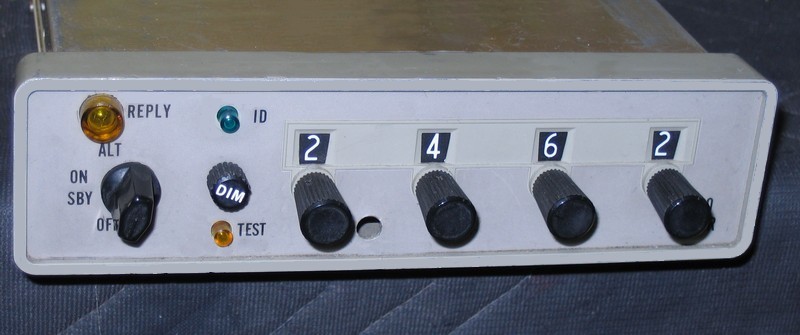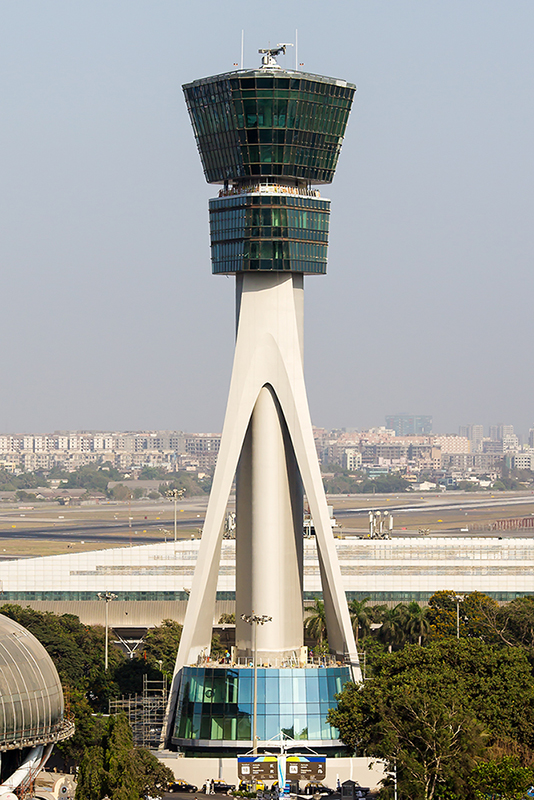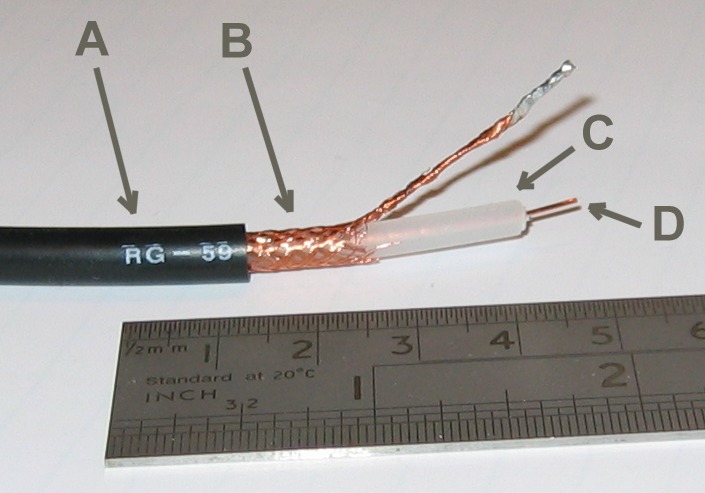|
Air Traffic Control Radar Beacon System
The air traffic control radar beacon system (ATCRBS) is a system used in air traffic control (ATC) to enhance surveillance radar monitoring and separation of air traffic. It consists of a rotating ground antenna and transponders in aircraft. The ground antenna sweeps a narrow vertical beam of microwaves around the airspace. When the beam strikes an aircraft, the transponder transmits a return signal back giving information such as altitude and the Squawk Code, a four digit code assigned to each aircraft that enters a region. Information about this aircraft is then entered into the system and subsequently added to the controller's screen to display this information when queried. This information can include flight number designation and altitude of the aircraft. ATCRBS assists air traffic control (ATC) surveillance radars by acquiring information about the aircraft being monitored, and providing this information to the radar controllers. The controllers can use the information ... [...More Info...] [...Related Items...] OR: [Wikipedia] [Google] [Baidu] |
Air Traffic Control
Air traffic control (ATC) is a service provided by ground-based air traffic controllers who direct aircraft on the ground and through a given section of controlled airspace, and can provide advisory services to aircraft in non-controlled airspace. The primary purpose of ATC is to prevent collisions, organise and expedite the flow of traffic in the air, and provide information and other support for pilots. Personnel of air traffic control monitor aircraft location in their assigned airspace by radar and communicate with the pilots by radio. To prevent collisions, ATC enforces Separation (air traffic control), traffic separation rules, which ensure each aircraft maintains a minimum amount of 'empty space' around it at all times. It is also common for ATC to provide services to all General aviation, private, Military aviation, military, and commercial aircraft operating within its airspace; not just civilian aircraft. Depending on the type of flight and the class of airspace, AT ... [...More Info...] [...Related Items...] OR: [Wikipedia] [Google] [Baidu] |
Coaxial Cable
Coaxial cable, or coax (pronounced ), is a type of electrical cable consisting of an inner Electrical conductor, conductor surrounded by a concentric conducting Electromagnetic shielding, shield, with the two separated by a dielectric (Insulator (electricity), insulating material); many coaxial cables also have a protective outer sheath or jacket. The term ''coaxial'' refers to the inner conductor and the outer shield sharing a geometric axis. Coaxial cable is a type of transmission line, used to carry high-frequency Signal, electrical signals with low losses. It is used in such applications as telephone trunk lines, Internet access, broadband internet networking cables, high-speed computer bus (computing), data buses, cable television signals, and connecting Transmitter, radio transmitters and Radio receiver, receivers to their Antenna (radio), antennas. It differs from other shielded cables because the dimensions of the cable and connectors are controlled to give a precise, ... [...More Info...] [...Related Items...] OR: [Wikipedia] [Google] [Baidu] |
Octal
Octal (base 8) is a numeral system with eight as the base. In the decimal system, each place is a power of ten. For example: : \mathbf_ = \mathbf \times 10^1 + \mathbf \times 10^0 In the octal system, each place is a power of eight. For example: : \mathbf_8 = \mathbf \times 8^2 + \mathbf \times 8^1 + \mathbf \times 8^0 By performing the calculation above in the familiar decimal system, we see why 112 in octal is equal to 64+8+2=74 in decimal. Octal numerals can be easily converted from binary representations (similar to a quaternary numeral system) by grouping consecutive binary digits into groups of three (starting from the right, for integers). For example, the binary representation for decimal 74 is 1001010. Two zeroes can be added at the left: , corresponding to the octal digits , yielding the octal representation 112. Usage In China The eight bagua or trigrams of the I Ching correspond to octal digits: * 0 = ☷, 1 = ☳, 2 = ☵, 3 = ☱, * 4 = ☶, ... [...More Info...] [...Related Items...] OR: [Wikipedia] [Google] [Baidu] |
Frame Synchronization
In telecommunications, frame synchronization or framing is the process by which, while receiving a stream of fixed-length frames, the receiver identifies the frame boundaries, permitting the data bits within the frame to be extracted for decoding or retransmission. When packets of varying length are sent, it is necessary to have an instantly recognizable packet-end delimiter (e.g., Ethernet's end of stream symbol). Loss of carrier signal can be interpreted as a packet-end delimiter in some cases. When a continuous stream of fixed-length frames are sent, a synchronized receiver can in principle identify frame boundaries forever. In practice, receivers can usually maintain synchronization despite transmission errors; bit slips are much rarer than bit errors. Thus, it is acceptable to use a much smaller frame boundary marker, at the expense of a lengthier process to establish synchronization in the first place. Frame synchronization is achieved when the incoming frame alignme ... [...More Info...] [...Related Items...] OR: [Wikipedia] [Google] [Baidu] |
Ident (aviation)
A transponder (short for ''trans''mitter-res''ponder'' and sometimes abbreviated to XPDR, XPNDR, TPDR or TP) is an electronic device that produces a response when it receives a radio-frequency interrogation. Aircraft have transponders to assist in identifying them on air traffic control radar. Collision avoidance systems have been developed to use transponder transmissions as a means of detecting aircraft at risk of colliding with each other. Air traffic control (ATC) units use the term "squawk" when they are assigning an aircraft a transponder code, e.g., "Squawk 7421". Squawk thus can be said to mean "select transponder code" or "squawking ''xxxx''" to mean "I have selected transponder code ''xxxx''". The transponder receives interrogation from the secondary surveillance radar on 1030 MHz and replies on 1090 MHz. Secondary surveillance radar Secondary surveillance radar (SSR) is referred to as "secondary", to distinguish it from the "primary radar" that works by ... [...More Info...] [...Related Items...] OR: [Wikipedia] [Google] [Baidu] |
Transponder 2
In telecommunications, a transponder is a device that, upon receiving a signal, emits a different signal in response. The term is a blend of ''transmitter'' and ''responder''. In air navigation or radio frequency identification, a flight transponder is an automated transceiver in an aircraft that emits a coded identifying signal in response to an interrogating received signal. In a communications satellite, a satellite transponder receives signals over a range of uplink frequencies, usually from a satellite ground station; the transponder amplifies them, and re-transmits them on a different set of downlink frequencies to receivers on Earth, often without changing the content of the received signal or signals. Satellite/broadcast communications A communications satellite’s channels are called transponders because each is a separate transceiver or repeater. With digital video data compression and multiplexing, several video and audio channels may travel through a single tra ... [...More Info...] [...Related Items...] OR: [Wikipedia] [Google] [Baidu] |
Gillham Code
Gillham code is a zero-padded 12-bit binary code using a parallel nine- to eleven-wire interface, the Gillham interface, that is used to transmit uncorrected barometric altitude between an encoding altimeter or analog air data computer and a digital transponder. It is a modified form of a Gray code and is sometimes referred to simply as a "Gray code" in avionics literature. History The ''Gillham interface'' and ''code'' are an outgrowth of the 12-bit IFF Mark X system, which was introduced in the 1950s. The civil transponder interrogation modes A and C were defined in air traffic control (ATC) and secondary surveillance radar (SSR) in 1960. The code is named after Ronald Lionel Gillham, a signals officer at Air Navigational Services, Ministry of Transport and Civil Aviation, who had been appointed a civil member of the Most Excellent Order of the British Empire (MBE) in the Queen's 1955 Birthday Honours. He was the UK's representative to the International Air Transport ... [...More Info...] [...Related Items...] OR: [Wikipedia] [Google] [Baidu] |
Pressure Altitude
Given an atmospheric pressure measurement, the pressure altitude is the imputed altitude that the International Standard Atmosphere (ISA) model predicts to have the same pressure as the observed value. The National Oceanic and Atmospheric Administration (NOAA) published the following formula for directly converting atmospheric pressure in millibars (mb) to pressure altitude in feet (ft): h = 145366.45 \left 1 - \left( \frac \right)^ \right In aviation, pressure altitude is the height above a standard datum plane (SDP), which is a theoretical level where the weight of the atmosphere is as measured by a barometer.Pilot’s Handbook of Aeronautical Knowledge (FAA-H-8083-25B), 2016, Chapter 4, p 4-4 It indicates altitude obtained when an altimeter is set to an agreed baseline pressure under certain circumstances in which the aircraft’s altimeter would be unable to give a useful altitude readout. Examples would be landing at a high altitude or near sea level under conditions of e ... [...More Info...] [...Related Items...] OR: [Wikipedia] [Google] [Baidu] |
Fuselage
The fuselage (; from the French language, French ''fuselé'' "spindle-shaped") is an aircraft's main body section. It holds Aircrew, crew, passengers, or cargo. In single-engine aircraft, it will usually contain an Aircraft engine, engine as well, although in some amphibious aircraft the single engine is mounted on a hardpoint, pylon attached to the fuselage, which in turn is used as a floating Hull (watercraft), hull. The fuselage also serves to position the Flight control surfaces, control and Stabilizer (aeronautics), stabilization surfaces in specific relationships to Wing, lifting surfaces, which is required for aircraft stability and maneuverability. Types of structures Truss structure This type of structure is still in use in many lightweight aircraft using welding, welded steel tube trusses. A box truss fuselage structure can also be built out of wood—often covered with plywood. Simple box structures may be rounded by the addition of supported lightweight strin ... [...More Info...] [...Related Items...] OR: [Wikipedia] [Google] [Baidu] |
Ultra High Frequency
Ultra high frequency (UHF) is the ITU designation for radio frequencies in the range between 300 megahertz (MHz) and 3 gigahertz (GHz), also known as the decimetre band as the wavelengths range from one meter to one tenth of a meter (one decimetre). Radio waves with frequencies above the UHF band fall into the super-high frequency (SHF) or microwave frequency range. Lower frequency signals fall into the VHF ( very high frequency) or lower bands. UHF radio waves propagate mainly by line of sight; they are blocked by hills and large buildings although the transmission through building walls is strong enough for indoor reception. They are used for television broadcasting, cell phones, satellite communication including GPS, personal radio services including Wi-Fi and Bluetooth, walkie-talkies, cordless phones, satellite phones, and numerous other applications. The IEEE defines the UHF radar band as frequencies between 300 MHz and 1 GHz. Two other IEEE ... [...More Info...] [...Related Items...] OR: [Wikipedia] [Google] [Baidu] |
L Band
The L band is the Institute of Electrical and Electronics Engineers (IEEE) designation for the range of frequencies in the radio spectrum from 1 to 2 gigahertz (GHz). This is at the top end of the ultra high frequency (UHF) band, at the lower end of the microwave range. Applications Mobile service In Europe, the Electronic Communications Committee (ECC) of the European Conference of Postal and Telecommunications Administrations (CEPT) has harmonized part of the L band (1452–1492 MHz), allowing individual countries to adopt this spectrum for terrestrial mobile/fixed communications networks supplemental downlink (MFCN SDL). By means of carrier aggregation, an LTE-Advanced or UMTS/HSDPA base station could use this spectrum to provide additional bandwidth for communications from the base station to the mobile device; i.e., in the downlink direction. In the Americas, mobile services are operated between the 1.7 GHz to 2.1 GHz range in the PCS and AWS bands. ... [...More Info...] [...Related Items...] OR: [Wikipedia] [Google] [Baidu] |






